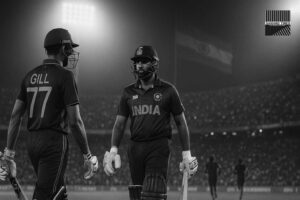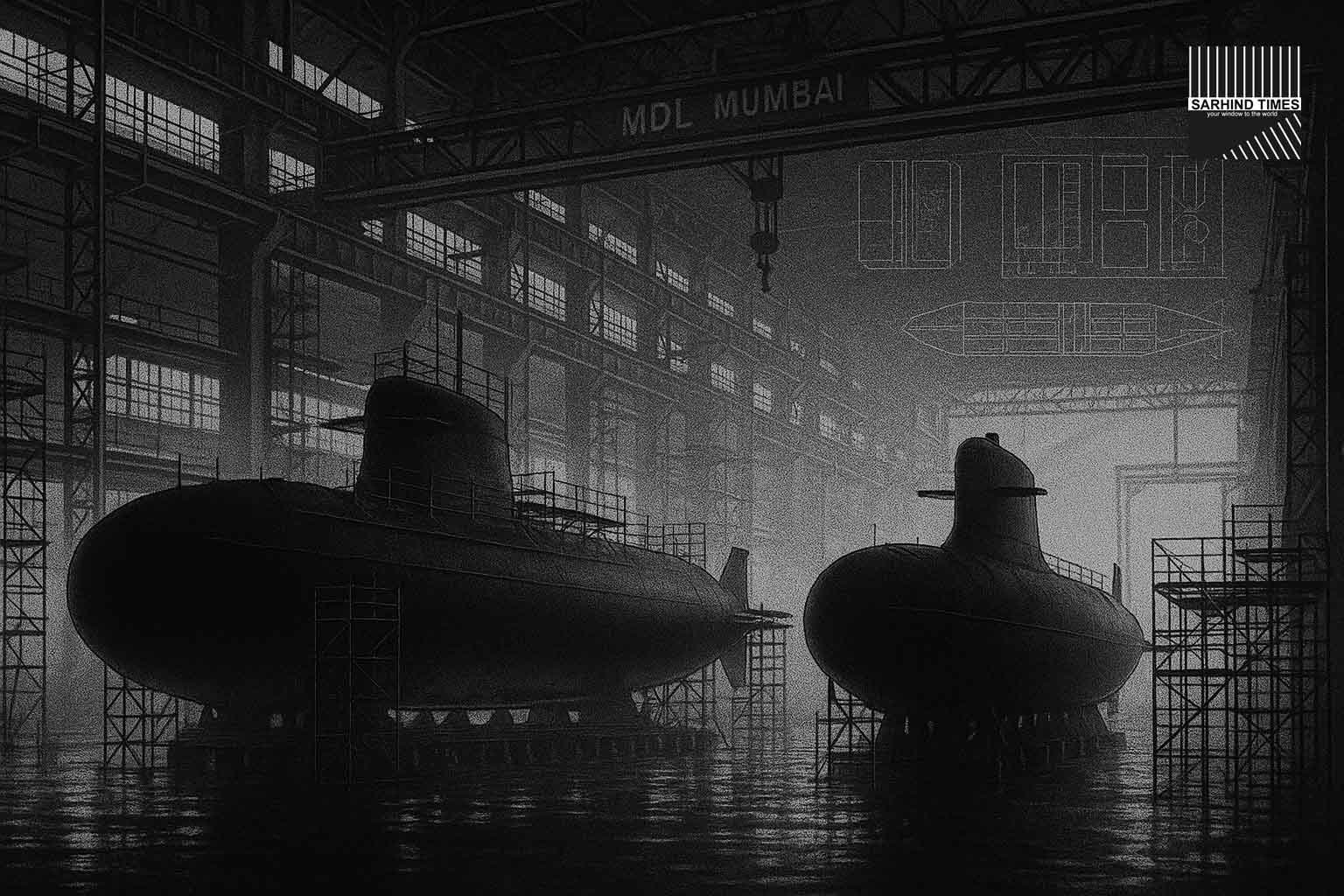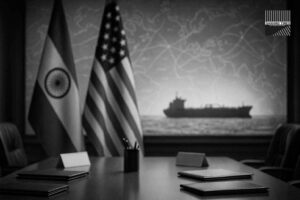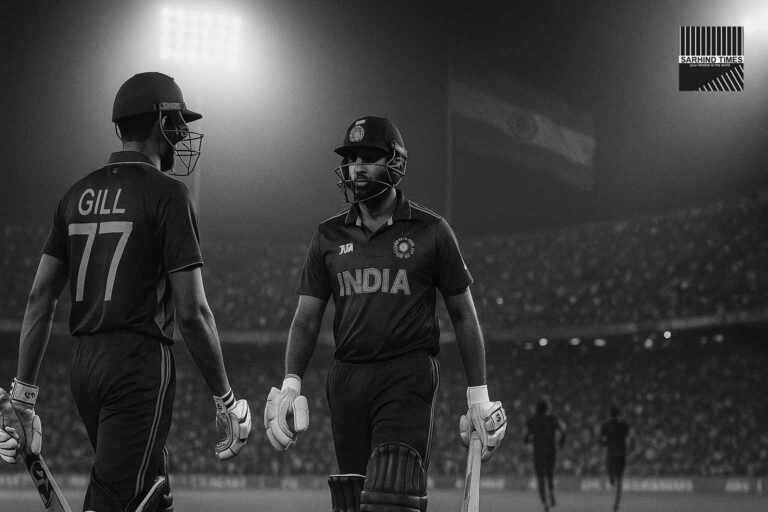Dateline: New Delhi | Tuesday, October 14, 2025 (IST)
In a marked shift to its undersea acquisition playbook, New Delhi is weighing the shelving of three additional French-origin Scorpène submarines—once seen as the quickest way to plug capability gaps—while prioritising six new German-origin diesel-electric boats slated to be built at Mazagon Dock Shipbuilders Ltd (MDL) under Project-75(I). Senior officials say the Scorpène add-on proposal, valued at ~₹36,000 crore, is “not being pursued now,” although a final “scrap” order has not been signed off; the pivot reflects a belief that the German package—costed at over ₹70,000 crore—represents a generation-jump in stealth, endurance and combat systems essential for the Indian Navy’s next decade.
What Changed—and Why It Matters
For two years, the Ministry of Defence (MoD) ran parallel tracks:
- Three more Scorpenes (a follow-on to the Kalvari-class), leveraging MDL’s production line and workforce familiarity.
- Six new-generation submarines under P-75(I), with German-origin design and air-independent propulsion (AIP) as a hard requirement.
While cost negotiations for the Scorpenes reportedly concluded last fiscal, the final Cabinet Committee on Security (CCS) go-ahead stalled, with sources citing the superior capability mix of the German-origin option and the Navy’s need to consolidate around quieter, longer-endurance hulls with mature AIP for contested waters.
This is not mere vendor roulette. It is a structural bet: fewer legacy extensions, more leapfrogs. The move also speaks to commonality benefits if P-75(I) becomes the reference for follow-on batches, thereby reducing lifecycle costs and simplifying sonar, CMS, torpedo and land-attack missile integrations across a larger class. Recent reportage confirms formal greenlighting of negotiations with Germany for six boats, placing MDL and ThyssenKrupp Marine Systems (TKMS) at the heart of the programme.
The State of Play: From Scorpenes to P-75(I)
- Scorpène Add-On (3 boats): Once pitched as a quick bridge to bolster force levels, the ~₹36,000–₹38,000 crore plan remains without CCS sign-off. Sources now indicate it is not being actively pursued, pending a final “black-and-white” closure.
- P-75(I) (6 boats, German-origin): Negotiations have begun/are commencing; reporting since January noted MDL–TKMS as the sole qualified path after the competing L&T–Navantia bid failed AIP maturity criteria. AIP, stealth, and long-endurance patrols define the requirement.
- Industrial Momentum: TKMS and MDL entered contract talks in September; supplementary teaming (e.g., Atlas Elektronik with Indian industry on heavyweight torpedoes) is coalescing around the programme’s local content spine.
Bottom line: India is converging on a German-technology core assembled at MDL, with tech transfer that can seed future programmes (e.g., Project-76), and a procurement arc geared to 2030s deliveries.
Capability Delta: Why the German Package Looks “A Generation Ahead”
1) Mature, Sea-Proven AIP
A decisive discriminator. AIP extends underwater endurance, shrinking exposure windows to adversary ASW assets. The MoD’s insistence on sea-proven AIP took the L&T–Navantia line out of contention this cycle; TKMS’s AIP pedigree aligns with the Navy’s mission profiles in chokepoints and long sea-denial patrols.
2) Low Acoustic Signature (Quieting)
German-origin designs offer tight machinery isolation, rafted equipment and propulsor refinements—critical for survival against modern towed arrays and dipping sonars. (Open sources describe a next-gen acoustic management philosophy feeding P-75(I) and beyond.)
3) Payload Flexibility: Torpedoes + Land-Attack Missiles
P-75(I) demands 18 heavyweight torpedoes and land-attack/anti-ship cruise missiles—a loadout and launcher flexibility beyond the legacy baseline, providing vertical depth in conventional deterrence.
4) Lifecycle & Commonality
Standardising sensors, CMS, weapons and training across a larger class means cheaper spares, simpler MRO, and quicker combat system updates—vital for a fleet that must sustain tempo in the Indian Ocean.
Industrial Workshare: What It Means for MDL—and Mumbai’s Yard Ecosystem
MDL has already executed the core Scorpène build programme and retains ship-lift, module handling, and integration expertise that can be retooled for P-75(I). The choice to pivot to a German-origin design keeps value-add onshore while upskilling the yard for new build standards and test regimes. If negotiations land as expected, MDL’s learning curve from Kalvari-class will be transferred and expanded—from hull fabrication to clean-room assembly of AIP modules and combat suites. Analysts also expect second- and third-tier supply chains in Maharashtra and beyond to scale into P-75(I).
There is, however, an opportunity cost: shelving the Scorpène follow-on could reduce near-term continuity for specific French-origin supply chains—from vibration-isolated foundations to sonar arrays—and may prompt offset re-balancing with French OEMs, including support contracts for the existing Kalvari-class. This is where fleet sustainment policy must keep MRO pipelines viable while the new class ramps.
Strategy First: The Threat Picture Under the Waves
The Indian Ocean is witnessing a thickening of PLAN deployments, including conventional submarines supporting far-sea operations. A credible Indian response requires quiet hulls, long legs, and land-attack options to impose costs and shape sea-denial zones. P-75(I) with AIP and advanced acoustic hygiene offers better survivability in ASW-rich environments—from drones and dipping sonars to multi-static buoys—than a legacy refresh would. That calculus, say planners, outweighs the near-term force-count boost from an extra trio of Scorpenes.
Timelines, Risk, Reality: Negotiations to First Steel
If the commercial negotiation phase proceeds without drift, a contract could be closed in the current fiscal/year ahead, with first steel roughly two to three years later and first delivery ~7 years after contract signature (indicative open-source timelines). The risk ledger spans:
- ATF and inflation shocks in Europe/India impacting vendor quotes;
- Tech-transfer scoping (how deep, how soon for indigenous AIP integration and CMS customisation);
- Test infrastructure—from pressure hull trials to shore integration facilities for combat systems—being ready in lockstep.
France Factor: From Build Partner to Sustainment Anchor?
Paris had argued for three more Scorpenes to bridge force levels while P-75(I) matured. If India definitively pivots away, expect industrial compensations in MRO, upgrades, and weapon/sensor refreshes for existing Kalvari boats—an arena where French OEMs remain consequential. With Indo-French ties spanning Rafale, S-400 offsets, and space cooperation, a Scorpène pause will likely be managed diplomatically with sustainment and upgrade work smoothing the runway.
The Money Trail: Why ₹70,000 Crore Isn’t Just a Bigger Bill
The headline figure masks a capability gap between a Scorpène follow-on and a fresh P-75(I) class. The German-origin boats bring:
- AIP-based patrol profiles (weeks submerged without snorkeling);
- launch flexibility for land-attack;
- and a design backbone that could inform Project-76—India’s longer-term conventional submarine family. In effect, the ₹70,000 crore is both fleet recapitalisation and a design-transfer bet on India’s 2030s submarine industry.
Procurement Transparency: What Good Looks Like
- Clear Milestones: Publish a negotiation → CCS → contract → build timeline with yard-readiness gates.
- Indigenisation Ledger: Track Indian content at hull, systems, and weapon layers; report vendor development in quarterly MoD dashboards.
- Test-First Culture: Ring-fence time for shore integration facility trials to avoid compressing test windows into acceptance runs.
- Sustainment Contracts Early: Lock long-lead spares and MRO tooling before first-article inspection to protect availability post-commissioning.
- Data Discipline: Standardise condition-based maintenance and acoustic health monitoring as part of the baseline.
Frequently Asked Questions (Explainer)
Is the Scorpène add-on cancelled?
No formal “scrap” order yet, but multiple reports say it is not being pursued now, with the German-origin P-75(I) taking priority.
Why not build both?
Executing two lines simultaneously stretches shipyard capacity, test facilities and trained manpower. MoD appears to favour focus and commonality to reduce long-run costs and complexity.
Who is the German partner?
ThyssenKrupp Marine Systems (TKMS), teamed with MDL; Reuters and others reported MDL–TKMS as the sole qualified bid after the Spanish bid fell short on AIP maturity.
What about torpedoes and missiles?
Open sources point to 18 heavyweight torpedoes and cruise missiles (land-attack/anti-ship) as P-75(I) requirements; Atlas Elektronik has signed MoUs with Indian industry on undersea weapons collaboration.
Editorial View: Hard Choices, Right Direction
India’s submarine recapitalisation can no longer be a series of stop-gaps. The tougher, smarter choice is often to forgo quick fixes and consolidate around a future-ready class that imposes real costs on adversaries and simplifies sustainment for decades. Prioritising P-75(I) does exactly that. The trade-offs—industrial transitions, vendor diplomacy, front-loaded cost—are worth it if execution stays on schedule and test discipline is enforced. In submarines, quiet and patient beats quick and noisy. Today’s pivot recognises that.
#IndianNavy #Submarines #Defence #Scorpene #MDL #NationalSecurity #MakeInIndia #P75I #TKMS #AIP
























+ There are no comments
Add yours